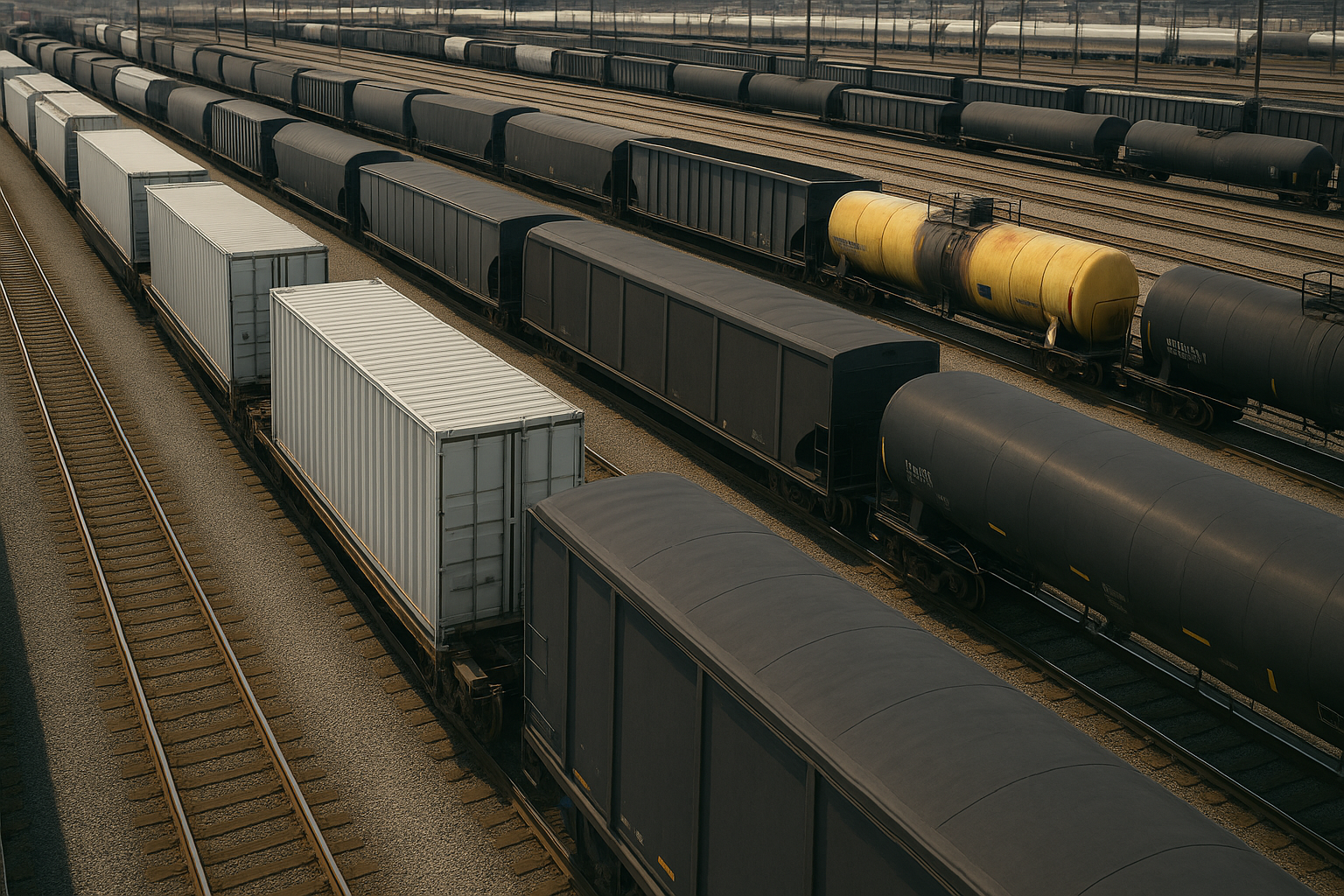Introduction to Railyard Fento
The term Railyard Fento is gaining attention as an emerging concept at the intersection of logistics, technology, and adaptive infrastructure. Although still relatively new, it represents a forward-thinking approach to how railyards—traditionally known as hubs for organizing and dispatching trains—can be reimagined for the future. Railyard Fento focuses on integrating automation, modular design, and sustainable practices to create smarter, more efficient transport ecosystems.
The Origin of the Railyard Fento Concept
Railyard Fento originated as a response to growing pressure on freight networks to handle increasing volumes with fewer delays. Traditional railyards have struggled with outdated layouts, manual scheduling, and energy-intensive operations. The Fento framework introduces digital optimization and modular yard architecture, allowing for scalable upgrades without fully replacing existing infrastructure. This approach helps modernize logistics without massive disruptions.
Core Principles Behind Railyard Fento
At its heart, Railyard Fento revolves around three main principles: flexibility, efficiency, and sustainability. Flexibility ensures that railyard systems can adapt to changing freight patterns or emergency conditions. Efficiency comes from integrating automated scheduling and real-time tracking to reduce bottlenecks. Sustainability emphasizes the use of renewable energy, electric shunting vehicles, and minimal land disruption. These pillars set the stage for a smarter and more resilient rail network.
Modular Infrastructure and Layout
One of the standout features of Railyard Fento is its modular design philosophy. Instead of constructing massive static yards, the Fento model uses interchangeable units—such as portable switching tracks, relocatable loading bays, and mobile control towers. This modularity allows yards to expand or contract based on seasonal demand, reducing wasted space and capital costs. It also simplifies maintenance by isolating repairs to specific sections without shutting down the entire yard.
Advanced Automation and Digital Integration
Railyard Fento leverages cutting-edge automation to streamline daily operations. AI-powered systems handle scheduling, while autonomous yard locomotives move railcars with precision. Integrated sensors and real-time data analytics help operators make fast, informed decisions. This high level of digital integration reduces human error, improves throughput, and increases safety by minimizing manual handling of rail equipment.
Energy Efficiency and Sustainability Goals
Environmental responsibility is a core aspect of the Railyard Fento vision. Electric or hybrid yard locomotives reduce emissions, while on-site renewable energy systems like solar panels or wind turbines can power facilities. Water recycling systems and green landscaping are also incorporated to minimize ecological impact. These sustainable practices align with global efforts to decarbonize transport and reduce the carbon footprint of freight logistics.
Enhanced Safety Protocols
Safety is another critical area where Railyard Fento makes a difference. Automated systems include built-in collision detection and emergency shutoff capabilities, reducing the likelihood of accidents. Real-time surveillance and predictive maintenance tools catch issues before they become hazards. By lowering the risk to workers and equipment, Fento yards build trust among employees and operators alike.
Economic Impact and Cost Benefits
While the upfront investment in Railyard Fento infrastructure can be substantial, its long-term economic advantages are significant. Automated operations reduce labor costs, while faster turnaround times improve revenue streams. Modular upgrades mean lower capital expenditure compared to full yard overhauls. For logistics companies, this translates into a more predictable and scalable financial model.
Impact on Global Supply Chains
The adoption of Railyard Fento could reshape global supply chains by increasing the reliability and speed of rail freight. Reduced delays at major nodes would improve just-in-time delivery models and lower warehousing costs. By serving as high-capacity, high-efficiency transit points, Fento yards could help rail networks capture a larger share of freight that currently relies on trucks, cutting both costs and emissions in international trade.
Applications Beyond Freight Transport
Although designed primarily for freight, Railyard Fento’s flexible framework can also support passenger rail systems. Temporary yard modules could serve during large events or seasonal travel peaks. Maintenance depots could be rapidly deployed to support expanding commuter networks. This adaptability shows that the Fento model can extend beyond traditional cargo applications and benefit the broader rail industry.
Integration with Smart City Ecosystems
Railyard Fento is also being explored as part of smart city infrastructure. By connecting yards to digital urban logistics platforms, cities could coordinate freight and passenger flows in real time. Integration with electric vehicle charging networks, drone delivery hubs, and automated warehouses would create seamless intermodal connections. This forward-looking approach aligns with the vision of data-driven, sustainable cities of the future.
Challenges to Implementation
Despite its promise, Railyard Fento faces several challenges. The cost of developing and installing modular and automated systems can be a barrier for smaller operators. Integrating new technology with legacy rail infrastructure requires careful planning to avoid disruptions. There are also regulatory and workforce considerations, as employees must be trained to operate and maintain advanced systems safely.
Future Outlook and Potential Growth
Experts believe that as technology costs decrease and sustainability pressures grow, Railyard Fento will become more widely adopted. Pilot programs are expected to test its feasibility in various environments, from major international freight hubs to regional transfer yards. If successful, this model could set a new standard for rail logistics, positioning rail transport as a faster, cleaner, and more adaptable alternative to road freight.
Why Railyard Fento Matters
Railyard Fento matters because it reimagines the role of railyards in a modern economy. By combining automation, modularity, and eco-conscious design, it offers a blueprint for transforming rail operations into something more responsive and resilient. It shows how traditional infrastructure can evolve without losing its core purpose, ensuring rail remains relevant in a fast-changing global transport landscape.
Conclusion
The Railyard Fento concept represents a bold shift in how railyards can operate—no longer as static, manual hubs but as dynamic, intelligent systems that adapt to changing demands. Its integration of modular layouts, automation, sustainability practices, and smart city connectivity positions it as a cornerstone of next-generation logistics. While challenges remain, its potential impact on efficiency, safety, and environmental performance makes it one of the most exciting innovations emerging in rail transport today.




